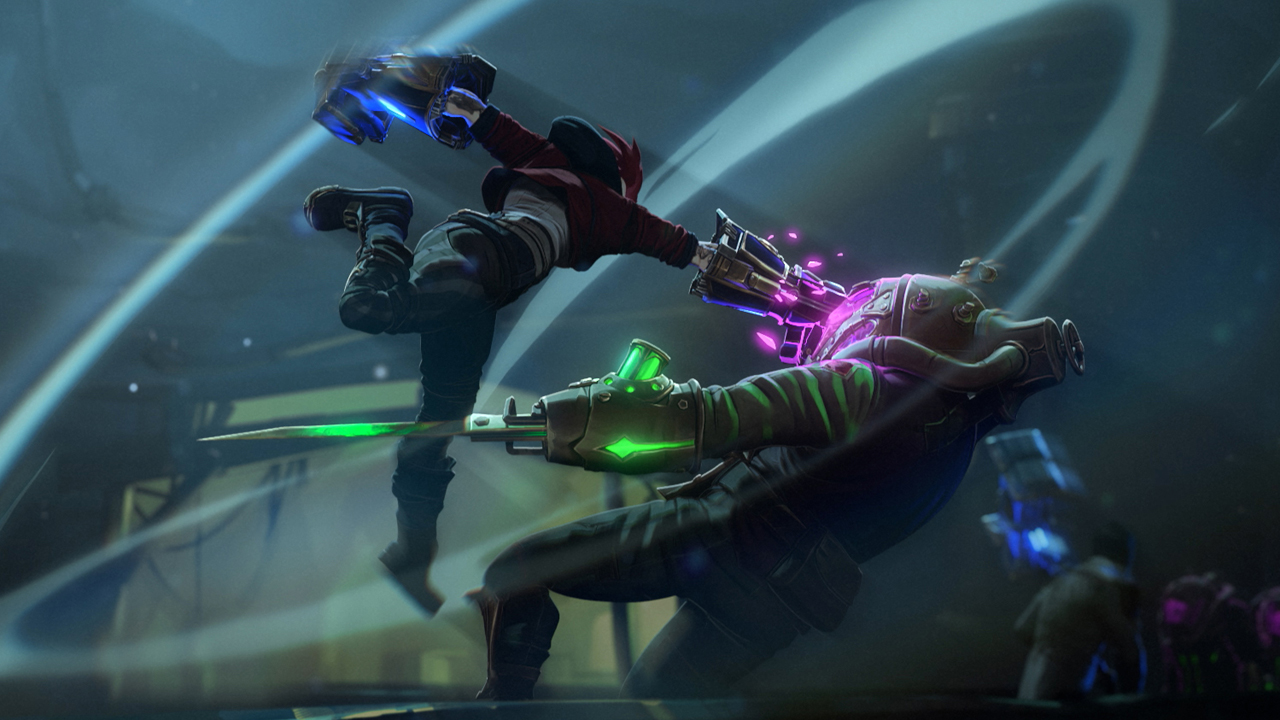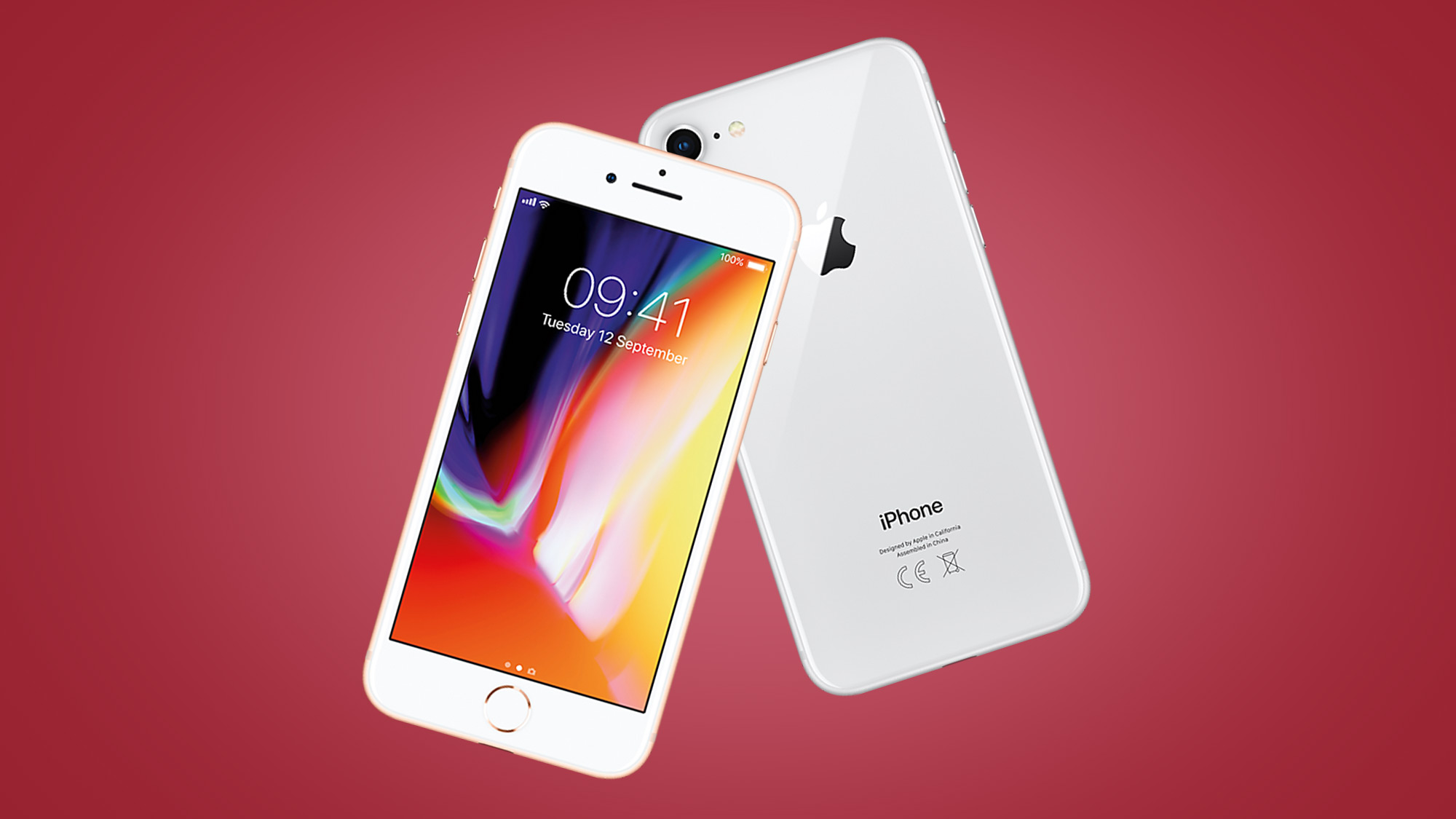Tag: tech
-
PS5’s latest update brings a handy community-driven option to the Game Help feature
The latest PS5 update adds Community Game Help which captures gameplay to help players through tricky challenges.PS5’s latest update brings a handy community-driven option to the Game Help featurePS5’s latest update brings a handy community-driven option to the Game Help feature -

Arcane season 2: everything we know so far about the hit Netflix show’s return
 Here’s everything you need to know about Arcane season 2 on Netflix ahead of its late 2024 release.Arcane season 2: everything we know so far about the hit Netflix show’s returnArcane season 2: everything we know so far about the hit Netflix show’s return
Here’s everything you need to know about Arcane season 2 on Netflix ahead of its late 2024 release.Arcane season 2: everything we know so far about the hit Netflix show’s returnArcane season 2: everything we know so far about the hit Netflix show’s return -

Apple might start developing its own AI chips – here’s what that means for Mac lovers
 Leaker claims Apple is stepping up its AI game – but don’t expect it to make a difference for the M4 chip.
Leaker claims Apple is stepping up its AI game – but don’t expect it to make a difference for the M4 chip.Originally appeared here:
Apple might start developing its own AI chips – here’s what that means for Mac lovers -
Microsoft Edge gets some Grammarly-style AI upgrades to boost your writing chops
 Edge introduces AI Compose for smarter text editing, digital pen support for handwriting, and enhanced clipboard functionality, enhancing browsing productivity and creativity.
Edge introduces AI Compose for smarter text editing, digital pen support for handwriting, and enhanced clipboard functionality, enhancing browsing productivity and creativity.Originally appeared here:
Microsoft Edge gets some Grammarly-style AI upgrades to boost your writing chops -
LG’s TV business return to profitability from Europe demand recovery, streaming
LG is selling more OLED and QNED TVs on the back of a demand recovery and the popularity of streaming.LG’s TV business return to profitability from Europe demand recovery, streamingLG’s TV business return to profitability from Europe demand recovery, streaming -
Watch this famous musician fly in a car with wings
The legendary French synth musician Jean-Michel Jarre has just become the first passenger to take to the skies in KleinVision’s incredible flying car.Go Here to Read this Fast! Watch this famous musician fly in a car with wings
Originally appeared here:
Watch this famous musician fly in a car with wings -
Manhattan’s DA wants to know why YouTube is pushing “ghost gun” tutorials to kids
Alvin Bragg, Manhattan’s District Attorney, wants to meet with YouTube CEO Neal Mohan to discuss why the website allows the posting of videos on how to manufacture “ghost guns” and why its algorithm is pushing them to underage viewers who watch video game content. Ghost guns are firearms assembled using 3D-printed parts or components purchased as kits. That means they have no serial numbers, making them near impossible to trace, and don’t need any kind of background check to acquire.
In a letter sent to Mohan (PDF) requesting a meeting, Bragg referenced a study conducted by the Tech Transparency Project in 2023, wherein it created four test YouTube accounts and gave them the profiles of 14-year-old and 9-year-old boys. Apparently, after playing at least 100 gaming videos, YouTube’s algorithm started recommending them instructional videos on how to make ghost guns. It doesn’t matter if they’d only watched, say, Call of Duty gameplay videos and had never interacted with any content featuring real guns. YouTube still pushed real gun content to their accounts, as well as other violence-related videos, such as those of school shootings and serial killers, even if they were supposed to be minors. Bragg also called YouTube’s attention to the fact that there’s no way for guardians to switch off the website’s recommendations in parental controls.
A lot of young individuals being investigated for gun possession in New York City said they learned how to make ghost guns from YouTube, Bragg wrote. While the website does remove those videos when they’re flagged by gun safety groups, the DA said YouTube should be more proactive in removing them, should make sure they get blocked from being uploaded in the future and should provide viewers a way to switch off recommendations. Especially since the website does have a policy that prohibits the uploading of videos intending to sell firearms or to instruct viewers on how to make them. YouTube told New York Daily News in a statement that it’ll “carefully review” videos the Manhattan DA shares with the company and that it remains committed to “removing any content that violates [its] policies.”
This article originally appeared on Engadget at https://www.engadget.com/manhattans-da-wants-to-know-why-youtube-is-pushing-ghost-gun-tutorials-to-kids-070219455.html?src=rss
Manhattan’s DA wants to know why YouTube is pushing “ghost gun” tutorials to kidsManhattan’s DA wants to know why YouTube is pushing “ghost gun” tutorials to kids -
The best ereaders for 2024
Few things beat the smell of a new book (or an old one for that matter), but carrying an entire library in your pocket or instantly getting a new book you just heard about make ereaders attractive gadgets. The experience of reading on one beat tablets and smartphones thanks to E Ink displays that are easier on your eyes than LED screens. Kindles have long been the dominant ebook readers in the US, but after testing a number of models, we think other companies are giving Amazon a run for their money with Kindle alternatives — our current top pick is a Kobo model. We put together this list of the best ereaders out there to help you find which will work for you.
What to look for in an ereader
Plenty of apps, including the Kindle app, will let you download and read digital books on a phone or tablet. But what makes ebook readers different is the screen: nearly all of them use technology from a company called E Ink. It manufactures electronic paper displays (EPD) composed of three sheets: one containing millions of microcapsules filled with black and white ink particles sandwiched between transparent electrode layers. When a charge is applied, either the black or white particles shift to the top, forming letters and the whitespace around them.
Because these displays are so different from standard LED panels, you can expect most ereaders to do a number of things well. They’ll be easier to stare at for long periods of time and easier to read in direct sunlight. Also, since E Ink displays only require power to rearrange the ink, these devices have much longer battery lives than even the best tablets: we’re talking weeks, not days.
The ereader market is not as saturated as, say, the smartphone market, but there are still plenty of options out there and they do have small but important differences among them. They tend to range from around $100 to more than $400, though usually the higher end options are stylus-enabled read/write E Ink tablets like the Kindle Scribe. Beyond price, you should consider physical properties like buttons, lights, storage and resolution, as well as how the software lets you find and access books.
Reading features
With any ereader, you’ll navigate the OS via taps and swipes, and some add physical page-turn buttons. Most with built-in buttons have an auto-rotating screen so you can press with your right or left hand.
As E Ink technology has advanced, resolution has greatly improved – even the budget Kindle ereader has a 300 ppi display. You can still find models with lower resolution, but we don’t recommend them.
Some ereaders have front LEDs that support light temperature adjustment. That means you can switch to a warmer light after the sun goes down, which will feel easier on the eyes. If you’re concerned about blue light, you should go for a reader with that feature.
Other features
The capabilities of these pocket libraries have advanced considerably since the early days. In addition to storing books, some let you browse the web, run apps and play music. The screen’s frame rate can’t handle gaming, but it’s good enough to show you the Wikipedia entry for New Zealand’s South Island while you read Birnam Wood.
If you listen to audiobooks, you may want a Bluetooth-enabled ereader capable of playing them. Most of the models we tested have that ability, with the notable exception of the Nook ereader we tried. Keep in mind that audiobook files can take up more space than print files so you’ll probably want a device with a higher storage capacity if you plan on doing a lot of listening.
Above all, you should consider where and how you intend to find books to read. Most ereaders make it easiest to shop through their own ebook store, but all of them (even Kindles) will now let you download titles from other sources, like libraries, unaffiliated ebook sellers and free public domain sites.
Photo by Amy Skorheim / EngadgetHow to get books for your ereader
Kindle, Nook and Kobo all have their own stores that you access directly from each brand’s devices. Prices are fairly competitive between the sellers, too – as I write this, the current NYT bestselling fiction ebook is $12 at Amazon, Barnes & Noble and the Kobo store. The top nonfiction release, The Anxious Generation, costs $16 at all three.
Amazon offers Kindle Unlimited for $12 per month, and it includes four million titles from which you can pick your next read. It includes audio and ebooks, but you won’t find many big, new releases or older bestsellers. Kobo has a subscription called Kobo Plus with about 1.3 million titles: it goes for $8 per month for ebooks only, $8 for audiobooks only or $10 for both.
Buying a book from a proprietary store instantly delivers it to your device, provided you’re connected to WiFi. It also syncs your reading across devices and apps, so you can pick up where you left off on your phone if you forgot your ereader at home. It truly is the most convenient way to go, but if you don’t want to be locked into one brand’s store, or if you opt for an ereader without its own marketplace, you do have options.
How to upload ePubs onto an ereader
Stores like ebooks.com and Google Play have millions of ebooks for sale as digital rights-managed (DRM) ePub files, which nearly all current ereaders (including Kindles) can display. Titles from some publishers like Tor and public domain classics from sites like Project Gutenberg are also sold as ePubs, but without the added DRM. Books you get from these sources will look just like ones you bought from a proprietary store, thanks to the flowable, formatted nature of ePub files. While these device-agnostic ebook collections give you extra options for finding your next read, they require a few additional steps to get the files onto your ereader.
To do so, you’ll typically need a computer running a free program called Adobe Digital Editions (ADE). After buying and downloading the ePub file, open ADE and plug your ereader into your computer. Your device should pop up in the left panel. Drag and drop the ePub file from your downloads folder into the main panel in ADE. The file will display as an image of the book cover. Drag that image onto your device on the left panel. If the file includes digital rights management (which protects against unauthorized copying) you’ll need to authorize your ereader, which requires using or creating a free Adobe ID. Once you’ve finished adding files to upload, eject the reader from your computer to complete the transfer process.
Kindles use a web-based uploader instead of the ADE method. After downloading an ePub file, drag and drop it into your browser with the Send to Kindle page open. As long as you’re signed into Amazon, this wirelessly transfers the files to your associated device.
Boox also uses a browser uploader called BooxDrop (along with many other methods) to deliver ePubs to the device. Open it from the Boox App menu and you’ll see a device-specific url. Type that into your browser to access a file delivery portal that uploads to your library. Boox’s built-in ereader app, NeoReader, doesn’t support files with DRM, so you won’t be able to read current titles from most publishers using that app. Fortunately, Boox devices run nearly every ereader app out there, letting you access ePubs any number of ways, though you’ll need to upload the files using each app’s requisite method.
How to read library books on an ereader
Your local library card lets you borrow audio and ebooks through a program called Overdrive and its companion app Libby. On a Kobo, you have have built-in access to Overdrive in a separate tab. Once you’ve linked your library card, the search function will include results for titles available from your local library; a few taps will upload your selections to your device for the length of the loan. I personally find it easiest to borrow the title I want through the Libby app on my phone. After that, the book pops up on my Kobo’s home screen once the device syncs.
To read library books on a Kindle, you can either go through the Libby app or the Overdrive section of your library’s website. Once you click Borrow, you’ll see the option to “Read now with Kindle,” which takes you to Amazon’s site to sign in. After that, the book will be delivered to your device the next time it connects to WiFi.
For other ereaders, you’ll go through your library’s Overdrive portal and download the ePub after clicking the Borrow button. You can then use the ADE process we described above. Devices that run external apps, like the Boox Leaf 2, allow you to read library books via the Libby app, just as you would on a smartphone or tablet.
You can also use the Libby app to borrow audiobooks, but you won’t be able to access them through your ereader. (The exception is an ereader, like the Boox Leaf 2, that allows external apps). I found it was easier to listen to an audiobook on my phone anyway, regardless of whether I borrowed it through Libby or bought it from Kindle or Kobo.
Photo by Amy Skorheim / EngadgetHow we tested
When putting together any guide, the first thing we do is spend hours researching the field. We look at what’s available, what’s new, and what shoppers and professional reviewers have to say. Then we narrow a list to the best candidates for hands-on testing.
I ended up getting eight ereaders, representing five different brands: Amazon, Kobo, Barnes & Noble, Boox and PocketBook. I bought, borrowed and uploaded books for each device using the methods above. Over the course of four weeks I evaluated each one in the areas of book access, ease of reading, extra features and overall value.
Kobo and Boox have recently released new ereaders. We’re in the process of testing the new Libra Colour and Clara Colour from Kobo, as well as the Page and Poke 5 from Boox. Once we’ve had the chance to evaluate them we’ll update this guide with our recommendations. Until then, here’s everything we tested so far:
The best ebook readers for 2024
This article originally appeared on Engadget at https://www.engadget.com/best-ereader-130013808.html?src=rss
Go Here to Read this Fast! The best ereaders for 2024
Originally appeared here:
The best ereaders for 2024 -
How to Keep on Developing as a Data Scientist
A few practical tips on how to keep on learning during your daily job
Originally appeared here:
How to Keep on Developing as a Data ScientistGo Here to Read this Fast! How to Keep on Developing as a Data Scientist


